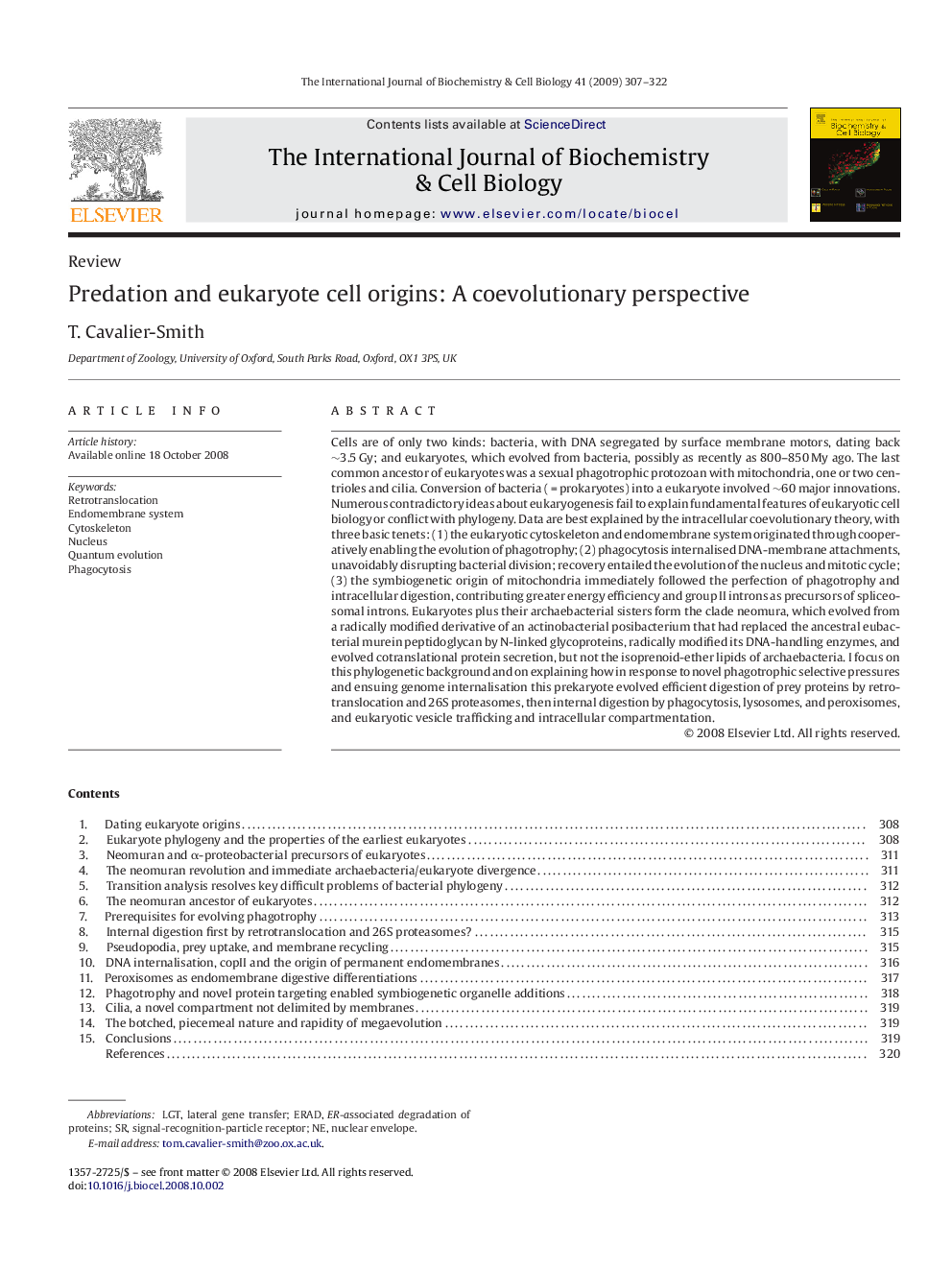| کد مقاله | کد نشریه | سال انتشار | مقاله انگلیسی | نسخه تمام متن |
|---|---|---|---|---|
| 1984277 | 1539956 | 2009 | 16 صفحه PDF | دانلود رایگان |

Cells are of only two kinds: bacteria, with DNA segregated by surface membrane motors, dating back ∼3.5 Gy; and eukaryotes, which evolved from bacteria, possibly as recently as 800–850 My ago. The last common ancestor of eukaryotes was a sexual phagotrophic protozoan with mitochondria, one or two centrioles and cilia. Conversion of bacteria ( = prokaryotes) into a eukaryote involved ∼60 major innovations. Numerous contradictory ideas about eukaryogenesis fail to explain fundamental features of eukaryotic cell biology or conflict with phylogeny. Data are best explained by the intracellular coevolutionary theory, with three basic tenets: (1) the eukaryotic cytoskeleton and endomembrane system originated through cooperatively enabling the evolution of phagotrophy; (2) phagocytosis internalised DNA-membrane attachments, unavoidably disrupting bacterial division; recovery entailed the evolution of the nucleus and mitotic cycle; (3) the symbiogenetic origin of mitochondria immediately followed the perfection of phagotrophy and intracellular digestion, contributing greater energy efficiency and group II introns as precursors of spliceosomal introns. Eukaryotes plus their archaebacterial sisters form the clade neomura, which evolved from a radically modified derivative of an actinobacterial posibacterium that had replaced the ancestral eubacterial murein peptidoglycan by N-linked glycoproteins, radically modified its DNA-handling enzymes, and evolved cotranslational protein secretion, but not the isoprenoid-ether lipids of archaebacteria. I focus on this phylogenetic background and on explaining how in response to novel phagotrophic selective pressures and ensuing genome internalisation this prekaryote evolved efficient digestion of prey proteins by retrotranslocation and 26S proteasomes, then internal digestion by phagocytosis, lysosomes, and peroxisomes, and eukaryotic vesicle trafficking and intracellular compartmentation.
Journal: The International Journal of Biochemistry & Cell Biology - Volume 41, Issue 2, February 2009, Pages 307–322